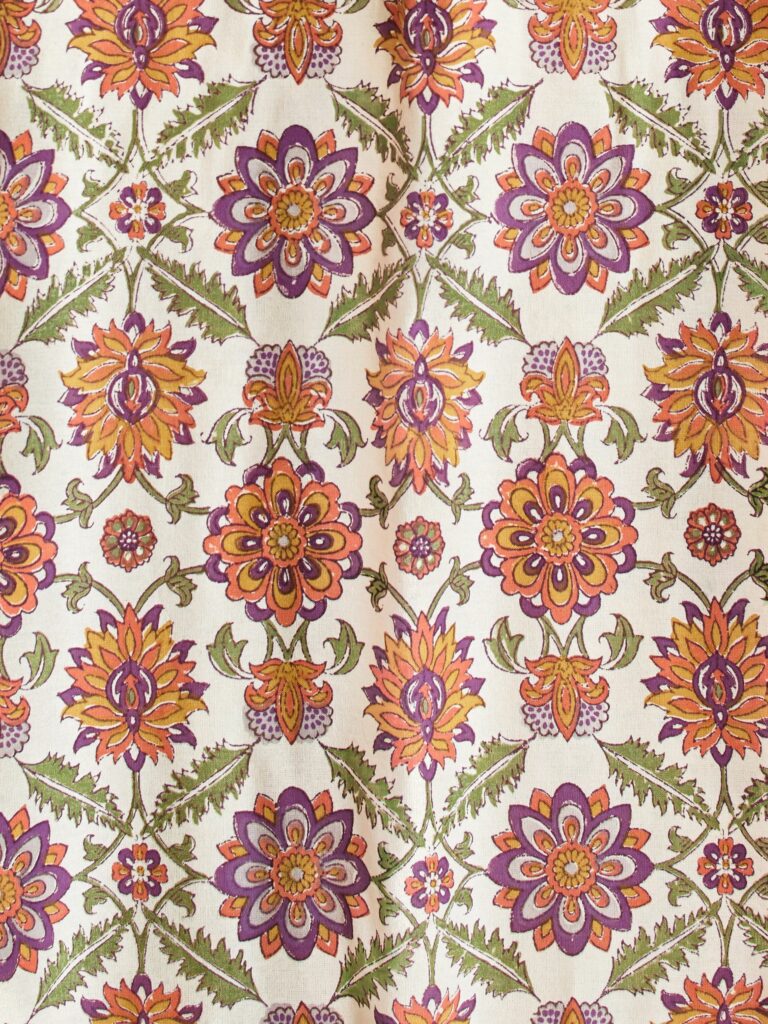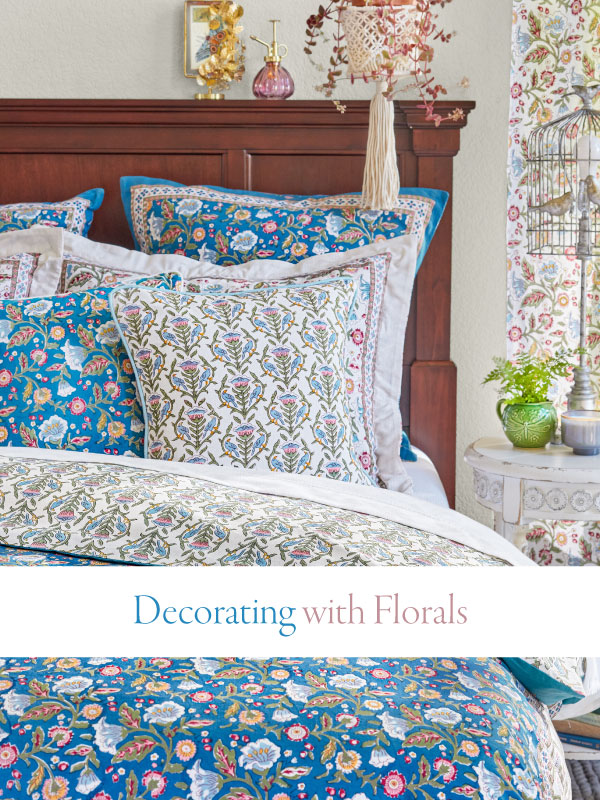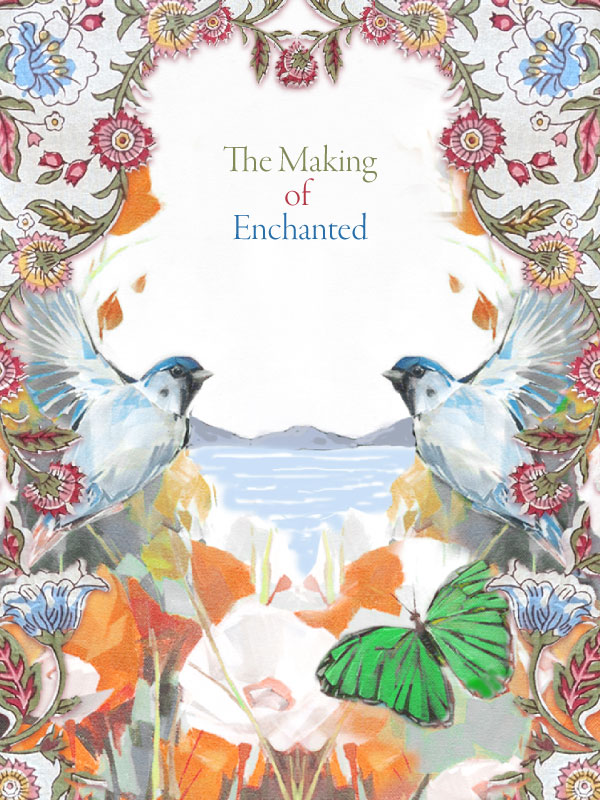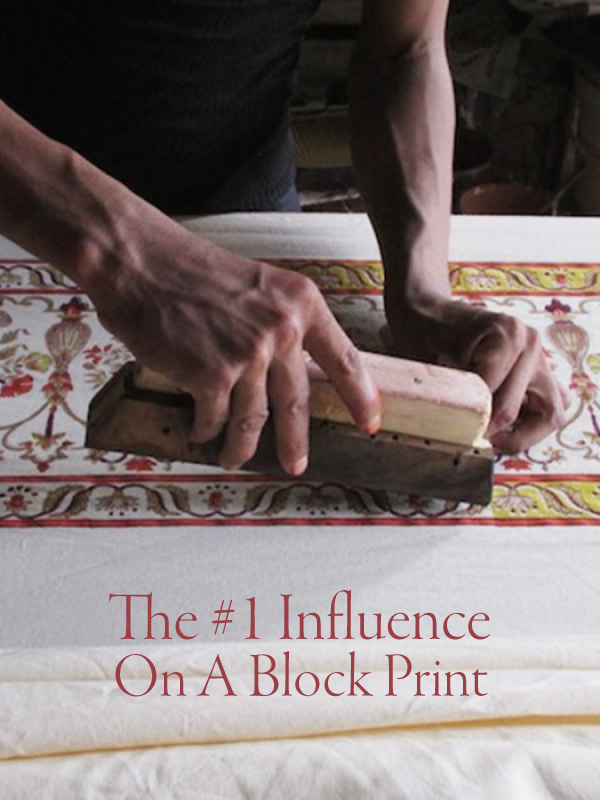Our Orange Blossom vintage floral print is one of our best-sellers. In fact, you may already have this block print adorning your own home! Today we’re taking a look at the creation of this pattern. We’re talking with designer Anisha Ghosh about her pattern inspiration and taking a peek behind the curtains in our artisans’ studio in Rajasthan, India to see the block printing process. Whether you’ve found yourself drawn to this vintage floral fabric or simply captivated by the heritage craft of block printing, we invite you to journey with us to the botanical Mediterranean scenery of Orange Blossom.
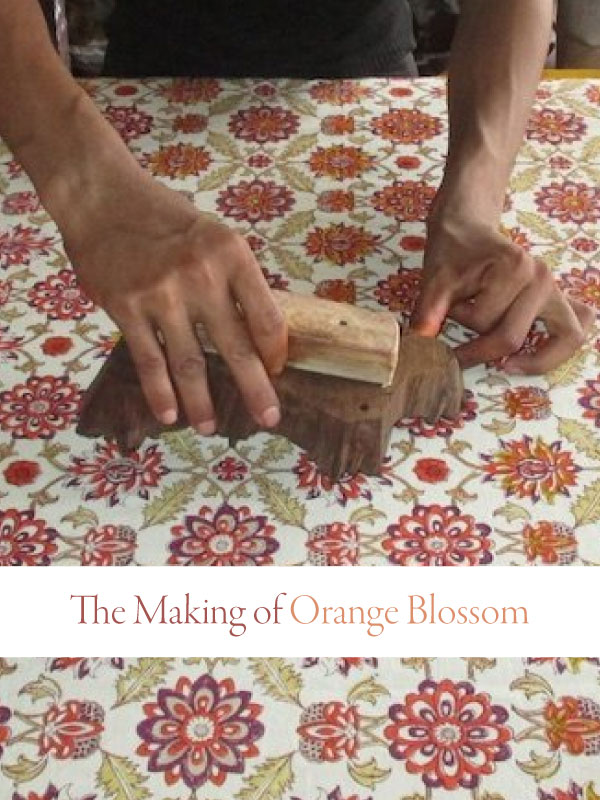
Orange Blossom: pattern inspiration
A lush vintage botanical print, Orange Blossom blends Persian, Mediterranean and tropical influences. This timeless pattern evokes visions of orange groves perfumed with the zesty freshness of orange flowers and crushed green leaves.

While this print may transport you to the sunny Mediterranean, it founds its influence in the cultural arts of Persia. Anisha Ghosh, co-owner and head designer at Saffron Marigold, shares that she found herself intrigued by the stunning Persian carpets of Isfahan.
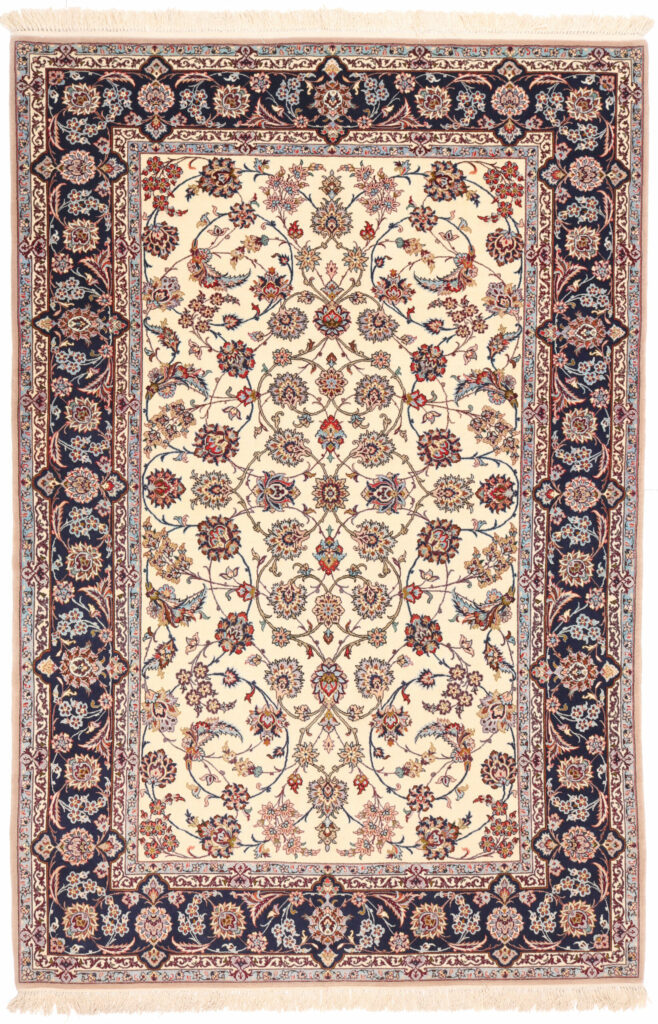
Saffron Marigold’s collections are known throughout the block printing world for their intricate borders. To create Orange Blossom’s border, another vintage floral print served as the muse.
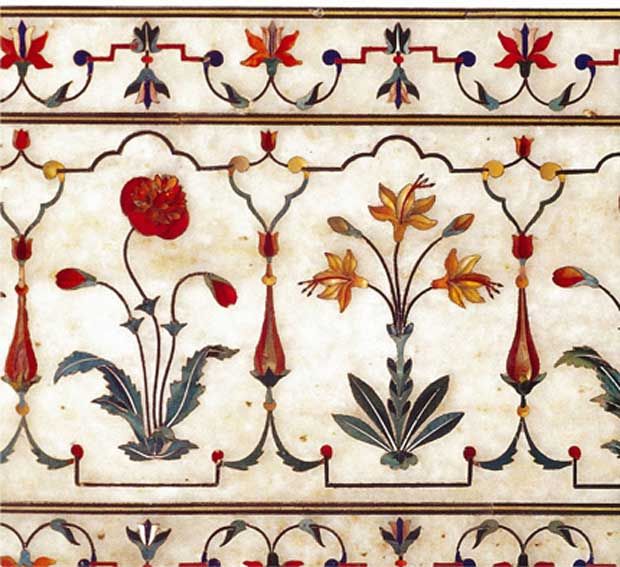
The pietra dura inlay found on the walls of the Taj Mahal inspired the detailed border for our beautiful block printed fabric.
The block printing process: a happy accident at the tables
Once her design was complete, Ghosh set off for Jaipur to sample the new collection. As she says, “the magic that happens at the sampling tables makes this the most exciting part of the process of conceptualizing a print, developing it, and taking it to market.”
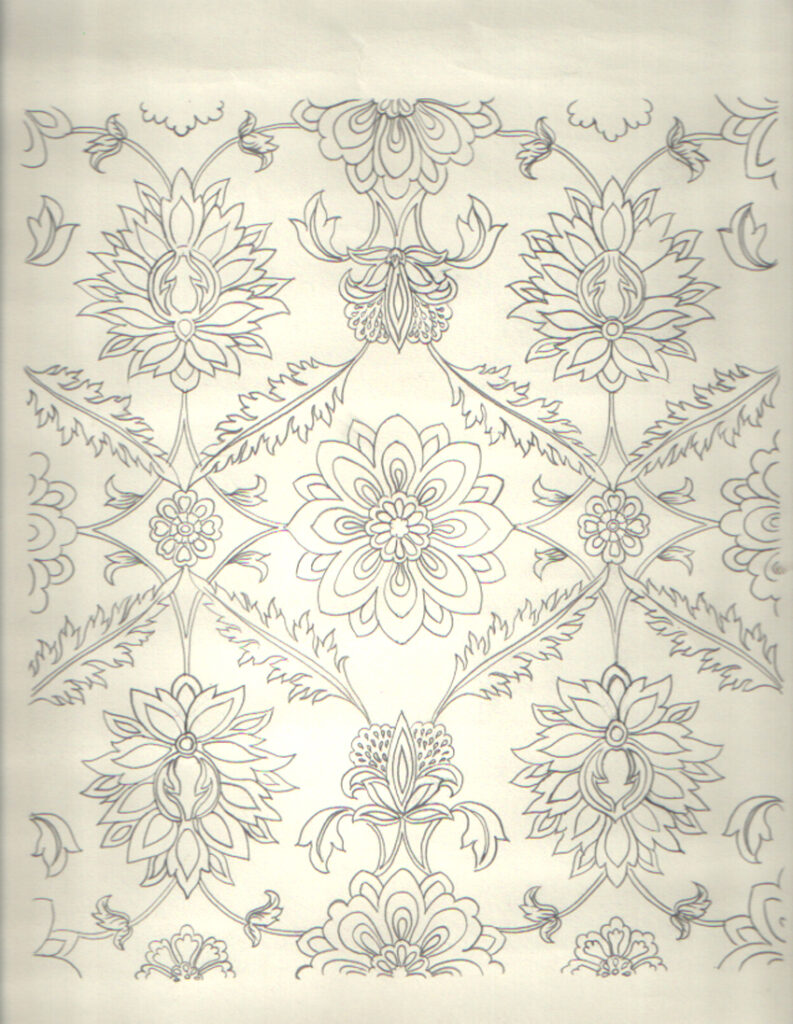
The anticipation was building for as Ghosh waited to bring her complex, 7-color floral print come life. Of course, we all know the wise poet’s words: the best laid plans often go awry. The block printing team was sampling the print in indigosol dyes (soluble cold vat dyes). In this process, the true colors of the print emerge after submerging the printed fabric in a light acid bath.
During these sampling trips, the fabrics have usually made their way to the washers before reviewing the final outcome. “However, on that particular lucky morning,” Ghosh recalls, “there was a delay in sending the prints to the washers. I had the chance to see the fabric in its unwashed state–and I was over the moon with what the oxidation process revealed!”

The indigosol dyes had oxidized into the most gorgeous, perfectly coordinated, fall color palette. It was a far cry from the navy, rust, and olive design that Ghosh had envisioned. Instead, the floral fabric filled with the warm colors of the harvest: marigold, sage, plum, and pumpkin. “At that very instant the name Orange Blossom flashed before me. I knew this was going to be our final palette for the print,” she explains. Ghosh immediately requested that the color master replicate the oxidized dyes, abandoning the original palette.
Let’s take a glimpse behind the curtains and see how it all comes together:
Planning in advance for our vintage floral pattern
We have a limited window of time in which we can print Orange Blossom–it’s a weather-specific print. Because of this, we have to estimate the demand for this collection one full year in advance!



